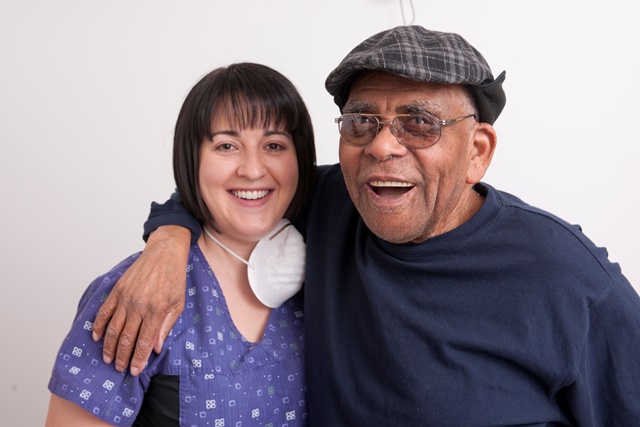#Home care may not be new, but with increasing professionalization of the sector, it has evolved, revealing fresh challenges and opportunities. Though home care providers share a commitment to quality healthcare with their counterparts in hospitals, their work reality is distinctly different. “In home care, nothing is a given,” says #VHA Home HealthCare (VHA) CEO and President, Carol Annett, “a quick consult with a colleague is not just down the hall, nor is the physical arrangement of each home necessarily conducive to care. In no other health setting does the relationship between patient and caregiver have the potential to play such a decisive role in the successful outcome of care.”
Recognizing the fine balance of clinical expertise and strong interpersonal skills required for this unique approach to care means that home health care organizations must help their staff develop both of these skill sets if they hope to provide the best home healthcare possible.
For VHA—a not-for-profit agency that has served Ontarians for nearly 90 years—achieving this equilibrium has become an organizational passion and is the driving force behind its Best Practice Spotlight Organization (BPSO®) program application and candidacy. Funded by the Ministry of Health and Long-Term Care, BPSO® is a rigorous three-year program, combining clinical experience and evidence-based research to implement and evaluate the Registered Nurses Association of Ontario’s (RNAO) best practice guidelines. Candidate organizations must select clinical topics specific to their work and for VHA natural best practice guidelines (BPGs) to focus on included: assessment and management of pressure ulcers, prevention of falls, end of life care, assessment and management of pain, and client and family-centred care.
MORE: A GERIATRICIAN CAN HELP AGING LOVED ONES
“BPSO® is a great opportunity to develop and support practice quality and patient safety improvements across the organization,” says Bea Mudge, Vice President Best Practices, Research and Education and VHA’s Chief Nursing Executive. “We’re building individual expertise through the role of champions and team knowledge through interdisciplinary collaboration. This isn’t just about improving nursing—we’re applying these standards and guidelines to rehabilitation and personal support services too.” Though their roles are different, the goal is the same: to provide a consistent, evidence-based quality of care at home and in the community. Mudge notes this approach results in more consistent care, better client outcomes and ultimately clients who are more satisfied with their care. “More importantly,” she adds, “measurement and outcome assessment from VHA’s candidacy will hopefully help shape home care best practices overall.”
Just as hospitals continue to work on measuring and improving patient experience, home care organizations are also honing in on client and family wants and needs to improve how they feel about the care they receive. One of the most successful strategies, notes Joy Klopp, VHA’s Director of Contracts, Quality and Risk Management has been Changing the Conversation, a collaboration between Toronto Central CCAC and its contracted Service Provider Agencies. “It’s a flexible approach to care that stresses simple yet important elements – not rushing, active listening, a positive demeanor – and translates these into a set of simple questions,” says Klopp. “It gives clients and family members the chance to talk about their concerns and priorities and encourages them to be in the driver’s seat when it comes to their care. It also empowers our staff and service providers to really get to know and respond to what matters most to our clients.”
MORE: GERIATRIC SPECIALISTS PROVIDE IN HOME CARE
With evaluations showing an improvement in client satisfaction, this is clearly an important step in enhancing the client experience. But the shift from client-centred care to a client-driven model means home care organizations must not only survey clients and family members after receiving care, but also engage them before any new program, service or communication vehicle is developed. A client-driven culture ensures the client and family voice are the foundation of all aspects of the organization’s planning, operation and services.
With this in mind, VHA began Client and Family Voice in 2013—an ongoing initiative that seeks out opportunities to partner with clients and families to ensure their needs, wants and priorities are understood and addressed at every level of service. “Whether it’s determining important qualities to look for when recruiting staff, how VHA deals with compliments and complaints, or what information they’d like to see on our website,” says Barbara Cawley VP of Client Services and Client and Family Voice lead, “we want to know what our clients and their family members think. Healthcare has had a reputation for taking a ‘we know best’ kind of attitude. Client and Family Voice really views clients and family members as the true experts in their care.”
MORE: RETHINKING THE TRADITIONAL HOSPITAL MODEL FOR ELDER CARE
Though it’s still early days for the initiative, Cawley is enthusiastic about the potential: “We’ve gleaned a lot from Holland Bloorview Kids Rehabilitation Hospital who are trailblazers in this area.What’s exciting is using their knowledge and experience as a springboard to developing a framework unique to home healthcare.”
By investing in initiatives that highlight both clinical and client experience best practices, organizations like VHA are carving out a new role for themselves within the health care continuum. At a time when historic demographic shifts, economic constraints and changing attitudes to life quality are rocking the health system, this commitment to clinical best practices and bedside manner excellence are absolute necessities—especially as home healthcare’s role becomes utterly indispensable.




